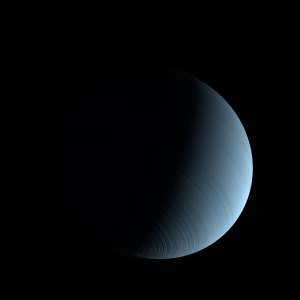|
|
Space Astro
|
Info for exoplanet "Lylis"
| Scientific (actual) data |
|---|
| Name | TOI-1266 c |
| Planet status | Confirmed |
| Planet mass | 0.00934 |
| Radius | 0.19 |
| Orbital period | 18.8016 |
| Semi major axis | 0.1047 |
| Orbit eccentricity | 0.34 |
| Inclination | 89.15 |
| Discovered | 2020 |
| Updated | 2024-10-29 |
| Tzero tr | 2459650 |
| Impact parameter | 0.769 |
| K | 1.22 |
| Temperature (kelvin) | 354 |
| Publication | Published in a refereed paper |
| Detection type | Primary Transit |
| Mass measurement type | Radial Velocity |
| Radius measurement type | Primary Transit |
| Star name | TOI-1266 |
| Right ascension | 198° |
| Declination | 65.83° |
| Mag v | 13 |
| Star distance | 36.05 |
| Star metallicity | -0.05 |
| Star mass | 0.45 |
| Star radius | 0.42 |
| Star sp type | M2 |
| Star age | 7.9 |
| Star temperature | 3600 |
| Wikipedia article | TOI-1266 c |
Back
| |
| Fictional info (?) |
|---|
| Suggested name | Lylis |
| Planet type | Planet |
|
| Atmosphere | Carbon monoxide | 75% |
| Nitric oxide | 20% |
| Molecular hydrogen | 2% |
| Neon | 1.8% |
| Atmospheric pressure | 0.5 bar |
 |
| No known satellites |
| Google search for Lylis |
|
Website by Joachim Michaelis
|
|
|
|